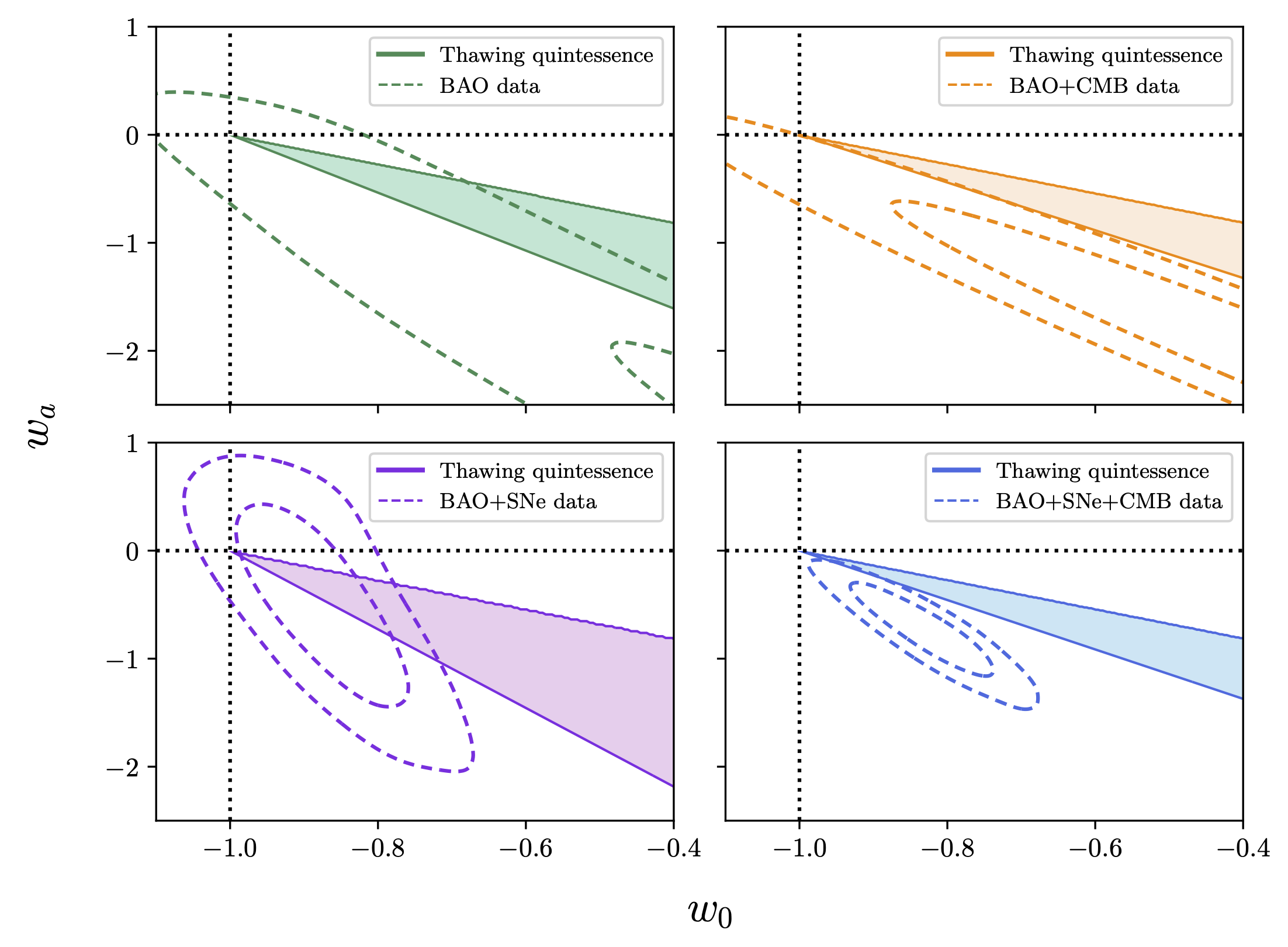Scant evidence for thawing quintessence
Published in Phys. Rev. D, 110(8):083528, 2024
Recommended citation: W.J. Wolf, C. García-García, D.J. Bartlett and P.G. Ferreira (2024). "Scant evidence for thawing quintessence." Phys. Rev. D, 110(8):083528.
Abstract
New constraints on the expansion rate of the Universe seem to favor evolving dark energy in the form of thawing quintessence models, i.e., models for which a canonical, minimally coupled scalar field has, at late times, begun to evolve away from potential energy domination. We scrutinize the evidence for thawing quintessence by exploring what it predicts for the equation of state. We show that, in terms of the usual Chevalier-Polarski-Linder parameters, ($w_0$, $w_a$), thawing quintessence is, in fact, only marginally consistent with a compilation of the current data. Despite this, we embrace the possibility that thawing quintessence is dark energy and find constraints on the microphysics of this scenario. We do so in terms of the effective mass $m^2$ and energy scale $V_0$ of the scalar field potential. We are particularly careful to enforce un-informative, flat priors on these parameters so as to minimize their effect on the final posteriors. While the current data favors a large and negative value of $m^2$, when we compare these models to the standard ΛCDM model we find that there is scant evidence for thawing quintessence.
 68% and 95% C.L. posterior distribution of the CPL parameters (dashed line) from the BAO (upper left), BAO+SNe (lower left), BAO+CMB (upper right), and BAO+CMB+SNe (lower right) data, where we use the data sets coming from DESI data, Pantheon+, and Planck+ACT lensing. Overlayed are the CPL parameters for thawing quintessence, obtained fitting the surveys characteristics as explained in Secton III. One can see that there is reasonable overlap when only the DESI or DESI+SNe data is considered. Once the CMB is included and all of the data is taken together, thawing quintessence is barely viable.
68% and 95% C.L. posterior distribution of the CPL parameters (dashed line) from the BAO (upper left), BAO+SNe (lower left), BAO+CMB (upper right), and BAO+CMB+SNe (lower right) data, where we use the data sets coming from DESI data, Pantheon+, and Planck+ACT lensing. Overlayed are the CPL parameters for thawing quintessence, obtained fitting the surveys characteristics as explained in Secton III. One can see that there is reasonable overlap when only the DESI or DESI+SNe data is considered. Once the CMB is included and all of the data is taken together, thawing quintessence is barely viable.
